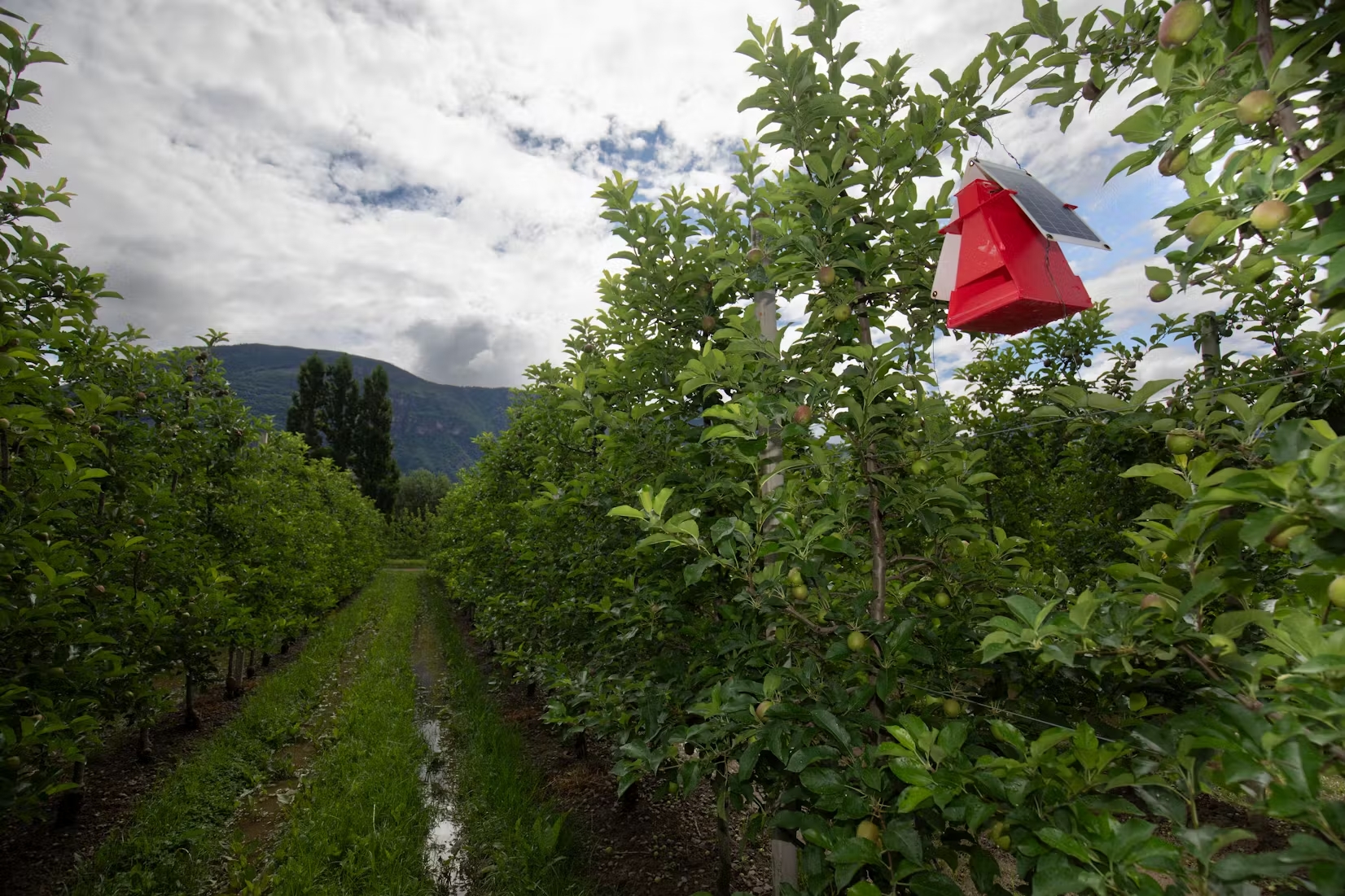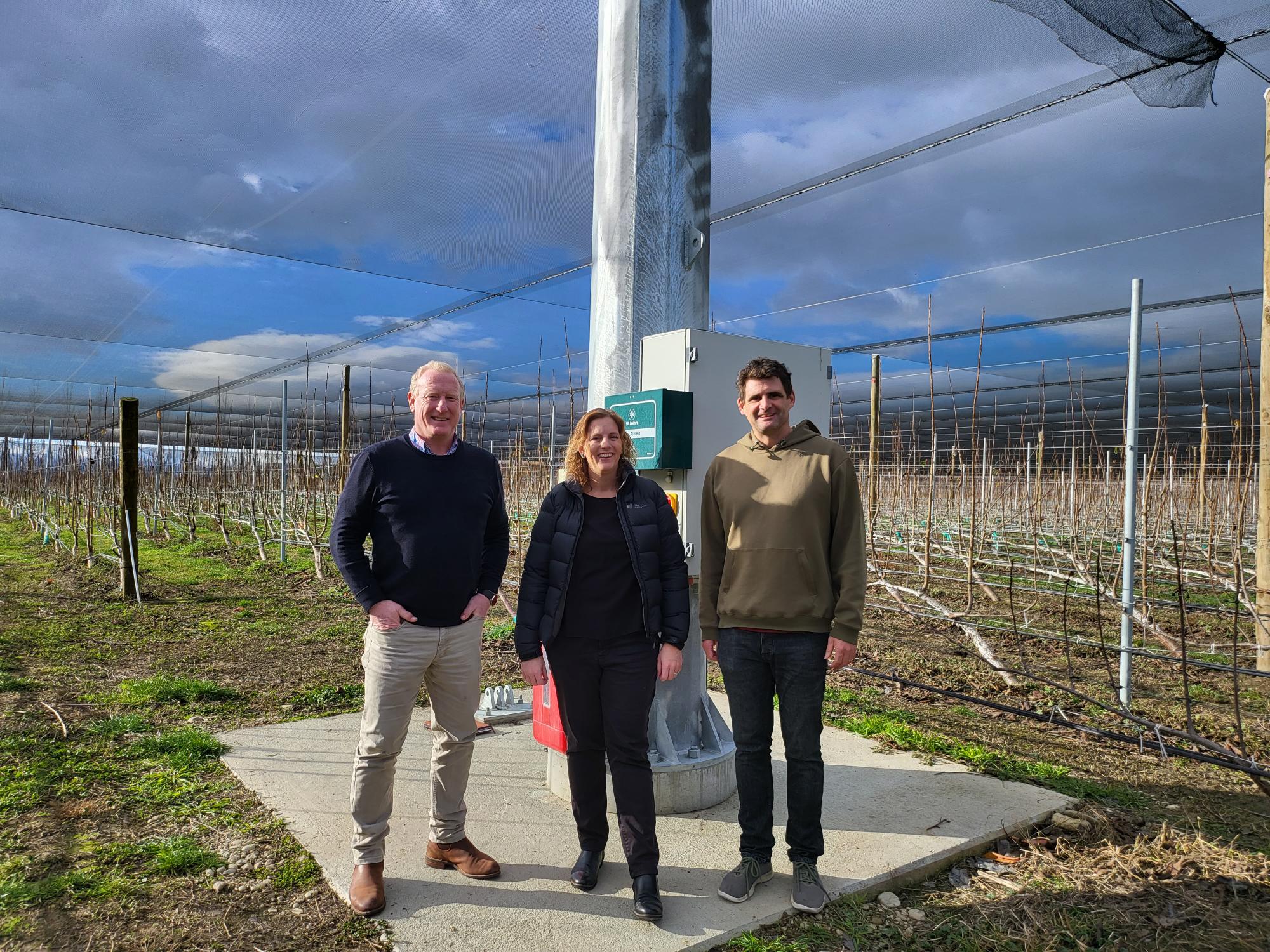In the basement of the Laimburg Research Center, a swarm of tiny flies moves inside a display case. The insects buzz frantically, immersed in the bluish light and the hum of scientific equipment. Small as sesame seeds, with large red eyes, these are specimens of Drosophila suzukii, a scourge for fruit production in Italy.
Something is observing them, scrutinizing their every wingbeat, but it’s not a human being. A infrared sensor "watches" the flight of the insects, capable of detecting even the slightest details. Every time the sensor detects one of the insects passing, the system collects new data. But that's not all.
The sensor is only the eye of a much more complex technology still under development: an algorithm. It is an artificial intelligence that, once trained, will be able to recognize harmful species for crops and signal their presence in real-time. The algorithm is set to become one of the future guardians of our orchards, the latest frontier in the fight against agricultural pests.
For Drosophila suzukii, cherries are not just a delicious meal: they are the key to the future. Female flies of the species entrust their offspring to its juicy pulp. Unlike other species that can only target soft, decaying fruits, Drosophila suzukii lays its eggs inside unripe fruits.
The larvae then devour the fruit from within, compromising its marketability. Drosophila suzukii has been present in Italy since 2009, when the species was accidentally introduced from Asia. Since then, the insect has spread widely thanks to its remarkable adaptability to temperate environments and the absence of natural predators, all to the detriment of cherry cultivation and other small fruits like blueberries and raspberries.
In an attempt to curb the problem, various countermeasures have been adopted: nets to cover orchards and block access, pesticides, and the release of predatory antagonistic organisms to combat the drosophila. Although these methods can contain the damage caused by infestations, they each have limitations and side effects.

“A big step forward would be knowing the exact moment when an infestation is about to occur,” says Silvia Schmidt, an entomologist at the Laimburg Research Center. “That way, nets and pesticides could only be used when truly necessary.”
This is where sensors and artificial intelligence come into play. Silvia Schmidt leads a research project aimed at developing innovative solutions to combat harmful species in orchards. The project, called INSTINCT, involves the Laimburg Research Center, Eurac Research's Center for Sensing Solutions, Unibz, and two companies specializing in the development of artificial intelligence-based technologies.
“One of our goals is to develop insect traps capable of identifying Drosophila suzukii using artificial intelligence. Every time a drosophila falls into the trap, it sends an alert to the farmer, who can then take the appropriate action,” explains the project leader.
To do this, the project team is using a sensor that detects how each species interacts with infrared rays during flight. Once the sensor has made thousands of detections, the data will be sent to the artificial intelligence, which will use it as a guide to recognize the insects.
Currently, to monitor the presence of Drosophila suzukii in cherry orchards, it is necessary to collect a sample of cherries and inspect them one by one, searching for the hole produced by the insects when they laid their eggs.
To simplify the inspection of cherries, the Center for Sensing Solutions is testing the use of special optical sensors. “These are devices that emit a light beam and allow us to study how the light is reflected by the fruit,” explains Gianluca Scuri, a researcher at the center. “Our hypothesis is that healthy cherries reflect light differently than those containing drosophila eggs.”
As part of the INSTINCT project, cherries are analyzed with a spectroradiometer, an instrument capable of emitting and capturing not only visible light but also infrared and ultraviolet light. The goal is to identify the type of light reflected by infected cherries.
“This will allow us to develop tools that emit and detect only those wavelengths,” explains Roberto Monsorno, director of the Center for Sensing Solutions. “Narrowing down the range of these sensors makes them more accessible and practical for field use.” A similar tool, the hyperspectral camera, is already being tested by Monsorno’s team in the cherry orchards of the Laimburg Research Center.

Drosophila suzukii is not the only species that affects orchard productivity in Italy—Cydia pomonella, also known as the codling moth, is a moth native to European wild apple trees. Its larvae burrow into fruits, particularly apples and pears, damaging them and causing them to fall from the tree.
To date, the most widely used technique to contain the proliferation of codling moths is the so-called “sexual confusion” method. This involves using pheromones, volatile chemical compounds similar to those moths use to communicate over distance. Thanks to these compounds, the males of the species are prevented from finding the females, limiting the number of matings.
However, the sexual confusion technique doesn’t always work. Pheromones do not have a long-range effect and, to be effective, must be released throughout the orchard. An alternative is the use of a virus that targets the larvae, killing them.
Read the full article: Eurac Research
Images: Eurac Research
Cherry Times - All rights reserved














